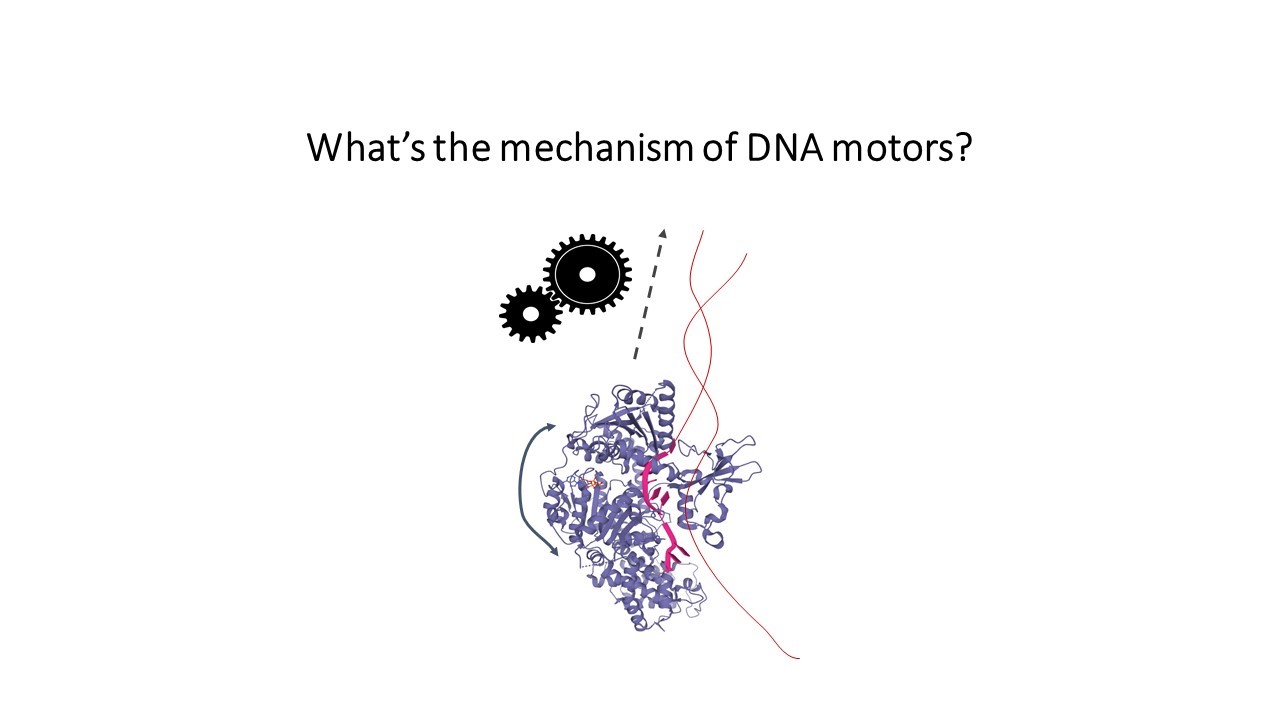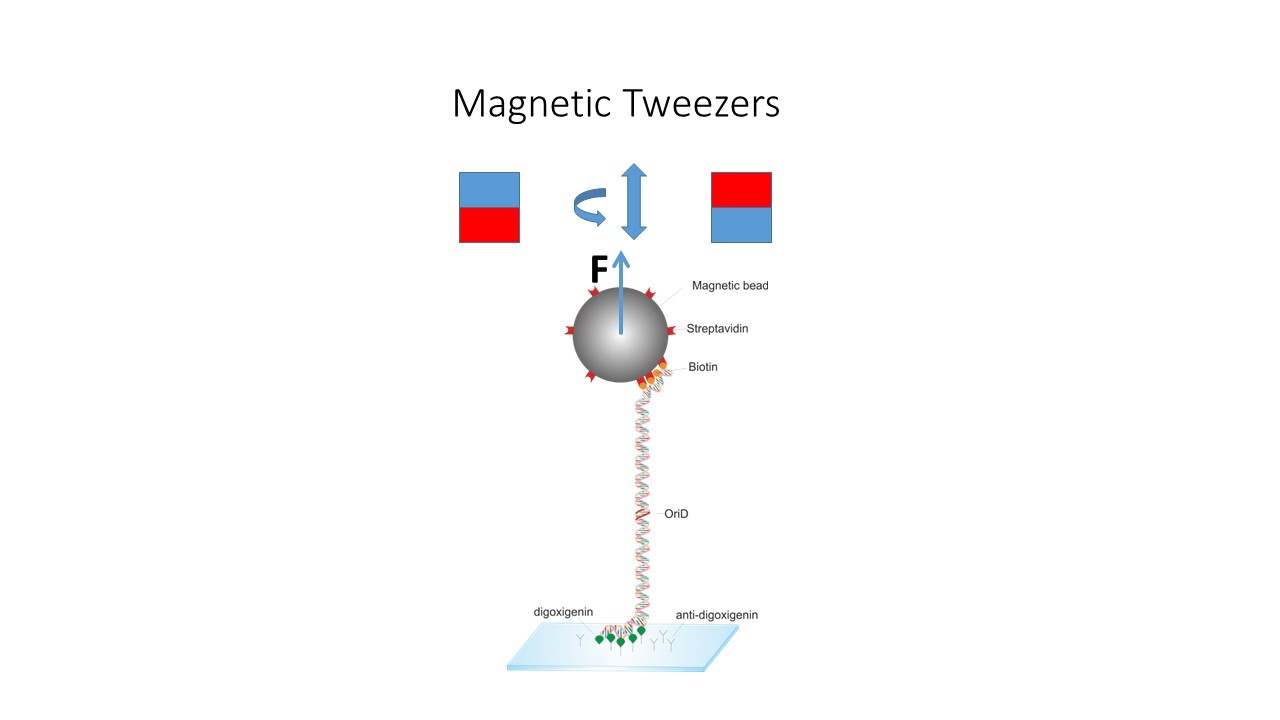Molecular motors are proteins that can create motion and perform mechanical work inside cells. DNA motors use energy from ATP hydrolysis to move along DNA. They perform a variety of functions each of which is essential to service DNA and maintain its integrity. Helicases, for instance, unwind DNA duplex during DNA replication. They move on DNA and separate two DNA strands during replication and other DNA processes. Conversely, DNA translocases with helicase-like domains move on both strands of DNA and do not unwind it, but remodel the DNA or enable restriction enzymes. DNA motors are found in all organisms, from viruses to eukaryotes, emphasizing the importance of this class of proteins.
In the DNA Motors Lab we are trying to understand how DNA motors function.
We are using single-molecule approaches as well as a number of other biochemical and biophysical techniques. That includes force microscopy (magnetic and optical tweezers), spectroscopy, protein purification, mutagenesis etc. Also, we combine engineering and programming to build custom-made microscopes.
We are working on DNA motors involved in CRISPR, SARS-Cov-2 replication, restriction-digestion enzymes, bacteriophage DNA packaging and others.
Our laboratory is part of EMBO Young Investigator Network.
 |
 |
